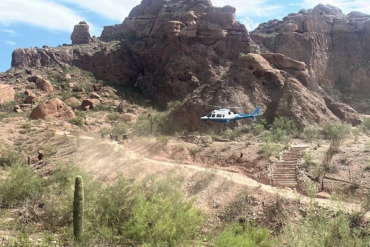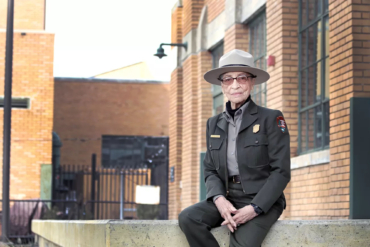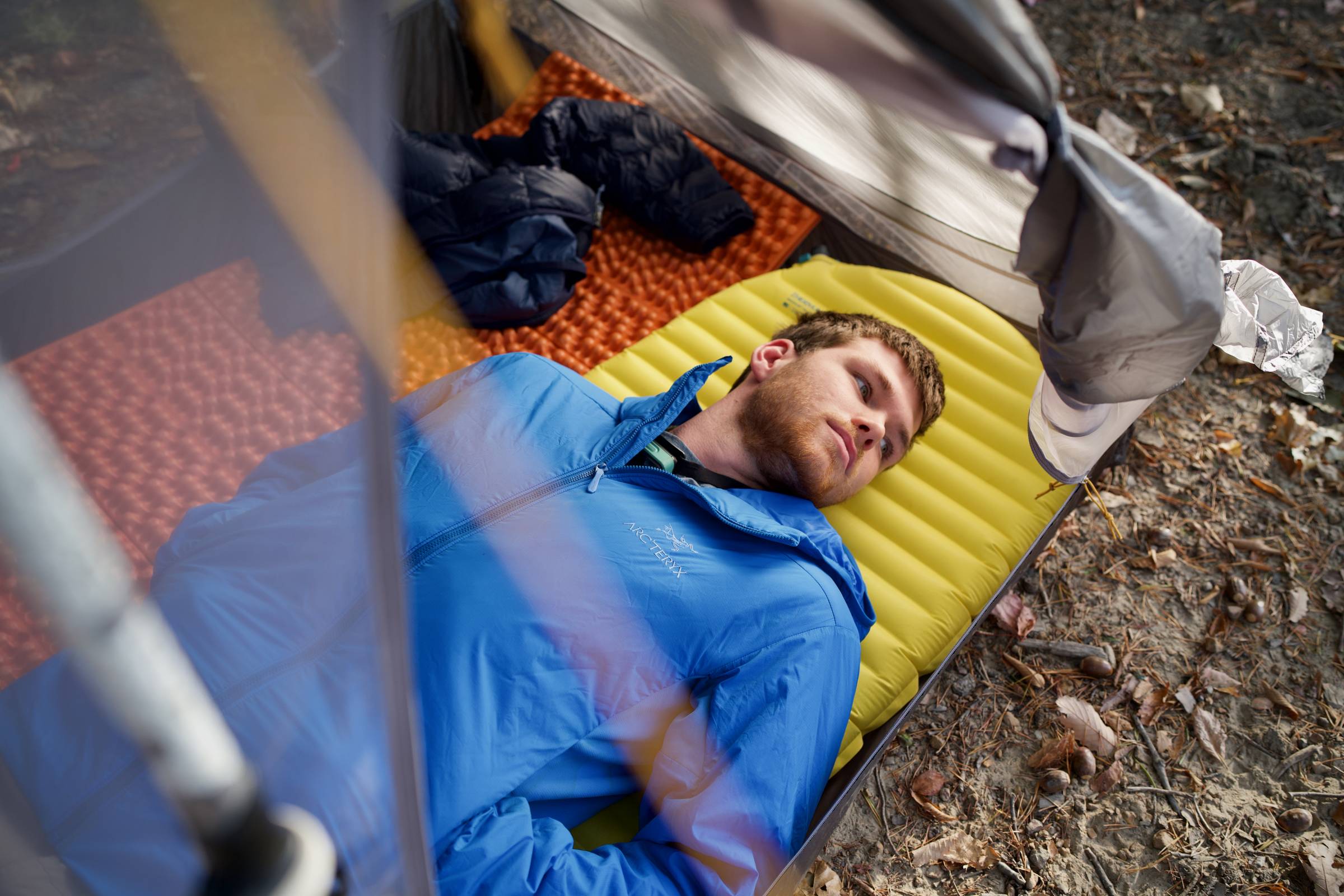LifeStraw revamped its namesake water filter straw and other filtration systems based on years of customer feedback. We asked the brand how best to care for these new products.
It took 17 years, but LifeStraw found ways to improve the performance and usability of its filters. The brand says the redesign gives the Peak filtration systems more versatility and a faster flow rate through its microfilter.
The original straw came out to achieve a goal of a personal water filter. Once the brand grew its product line to include other filtration systems, it saw a need to reverse engineer its complete line to be more compatible. LifeStraw also worked on the durability of its bladders and improved the filter flow rates up to 3 L per minute, according to the brand.
We talked with the brand to find ways to avoid user pitfalls and get maximum use and lifespan from the Peak water filtration systems.
Shop the LifeStraw Peak Collection
We talked with Tara Lundy, LifeStraw’s chief brand officer, who has worked with the company and used its filters for almost a decade. She explained what went into the redesign of the Peak Series and how to keep the filter systems working at their — ahem — peak performance.
The Peak Series Redesign
Lundy told us that the main goal of the redesign was to add versatility and durability. Both would address common frustrations about water filters — both LifeStraw and competitors — expressed by users in the field.
The brand’s engineering team sought to breathe new life into its 17-year-old straw design. “We were trying to figure out ways that we can add threading and adapters without having separate pieces to make the straw more functional,” said Lundy.
The engineers also saw that as a way to introduce new membrane configurations that could improve flow rate as well as prevent air traps. From there, the design team incorporated more robust materials in its bladder bags and its new leakproof caps.

Going Modular
For greater versatility, the LifeStraw Peak Series uses a modular design. This enables more ways to use the filters, including interchangeably between products.
“We were trying to find ways to cut down on needed amounts of gear by creating something that serves as both a dromedary or water storage device in addition to offering the filtration component so you don’t have to carry two separate things,” Lundy said.
The Peak squeeze bottles and gravity systems are made with a new membrane and come with a backwash plunger accessory. New soft-sided reservoir materials should add durability while the plunger and revamped microfilter should result in a better performance against sand and silt for more water flow over its lifespan. (More on individual products later.)
One example of a new use the modular design allows is evidenced in the squeeze bottles. Now you can remove the filter from inside the bottle and thread it onto the outside. That lets you compress the bottle all the way down to access the last bit of water inside.
At camp, this function works well to filter water into cooking pots or several cups. It also hooks up to a gravity system.

The New Straw
Leading off is a smaller build of the original straw, which will now fit the mouth of a standard plastic water bottle — still a common hiker staple and includes a built-in gravity hose attachment. The new Peak straw continues to work as a personal filter that comes in handy during an emergency.
“I think the reason why [the straw] has always been so popular is that it’s a relatively inexpensive way to have an emergency backup solution,” Lundy said. “It might not be the thing that you’re using to hydrate on a daily basis, but if it’s only 2 ounces and very intuitive to use, you have that option.”
In fact, LifeStraw continues to sell these personal straws in bundles, as people tend to keep them in emergency kits at home and in cabins, boats, backpack essential stashes, etc.

3 Tips to Improve Water Filter Performance
While LifeStraw has designed its products to work around common issues, there are some areas where the user can heed these tips and get more use and better performance from their filters.
Startup: You’re Doing It Wrong
New water filters or water filters that have been dormant need a bit more work to get them back into a more free-flowing state. That’s actually a feature, not a bug.
“Generally, at startup, it’s going to be a slightly slower flow rate for a few sips or uses,” Lundy said. She explained that a clogged filter is more likely caused by an air trap or drying out than grit from water.
In the first use, there’s likely some air trapped inside. It’s best to wet the membrane and take a few hard sips in the case of the straw, or use the plunger for the other systems to push water through the filter and unlock the flow rate.
For the new Peak line, LifeStraw engineers worked on “venting” — which is a way to allow air to escape the filter’s membrane — and a gravity hose to keep the flow rate going.
You can use the reservoir to push water through the filter or rely on gravity for a slow-drip activation while you’re off hiking.
There’s also a faster, straightforward approach: Suck on the end of the hose, spit out the initial water that hits your lips, and let whatever was in the hose hit the ground. Suction is a stronger force to pull air out of the filter and hose and is the shortcut to unlocking a faster flow rate.
Long-Term Storage
If you’re not using a filter for a long period of time, such as during a camping offseason, you should take steps to prevent it from drying out.
By storing it in water, the filter remains in a hydrophilic state. That means it will be easier to get it back into peak performance. You can also add a teaspoon of salt to fight the growth of algae or bacteria.
Besides the filter, you can rinse out the bladders and caps with dish soap or bleach and then let them air dry. Store them with the caps off.
When it’s time to reuse, you’ll want to flush the stale water and salt, which should be easy to detect.
Note: This applies to membrane-only filters, which is what the Peak collection uses. (Filters with carbon should be stored dry.)
Avoid Freezing
In simple terms, a water filter is a series of tiny holes that block larger particulates and let water squeeze through.
The LifeStraw membranes microfilters consist of small straws with microscopic pores that measure 0.2 microns in diameter. This is small enough to allow water past but will catch contaminants like bacteria, parasites, and even microplastics.
A frozen filter is a compromised filter. You’ll get a great flow rate, but no filtration. A wet filter that freezes means the water expands and stretches the filter’s holes. When it thaws, those larger holes could then allow larger particles to pass through — like silt and dirt, or potentially harmful bacteria if it’s present in the water source.
Whether you’re hiking, camping, or backcountry skiing in freezing temperatures, you should disconnect the filter and store it inside your jacket. Yep, that smartphone pocket may be better used as a water filter pocket.
During shoulder season or in alpine conditions, campers should separate the filter and store it inside their tents just in case the temperature dips below freezing overnight. This is another benefit that the LifeStraw team thought of, being able to remove and store the Peak series filters separate from the water storage.
Backflushing
File this under tips you may already know but still don’t do enough.
During heavy bouts of use, like a multiday hike with the filter, use the plunger accessory to regularly backflush the filter to keep up the flow rate.
For the unfamiliar, backflushing involves running water from the side providing drinking water and out the side attached to the water source. With the plunger, you can draw up clean, filtered water and then screw it onto the “out” side of the filter.
When you push the plunger down, it will force water through the filter and flush out silt and other debris. A few backflush rinses should restore the flow rate, and then it’s ready to be used normally again. (The Peak Series squeeze bottles and gravity filters come with a plunger accessory.)
With the straw, you can draw water to your lips and simply blow it back through a few times for similar results.
Peak Series Water Filter Systems
Peak Straw: $20

This new version of the brand’s iconic straw introduces a new grip, a faster water flow rate, and can be integrated with a gravity hose or squeeze bottle. The filter should last up to 5 years of use.
Shop NowPeak Squeeze (1L & 650ml): $38 & $33

These come with a tethered cap as well as a leakproof over-cap that LifeStraw says has twice the durability of other bottles. The bottles can function as hydration flasks or can be used to push water through an outward-mounted filter to provide water for others. The brand also integrated these with other Peak gravity systems by removing the filters.
Both come with a Peak Membrane Microfilter and backwash plunger.
Shop Now3L Gravity System: $60

Made for backpacking and small camping groups, the 3L gravity bags include a quick connector hose, carabiner, leakproof cap for water storage, easy carry strap, and backwash plunger.
The filter can be removed to work as a standalone “straw” and can be used with standard water bottles.
Shop Now8L Gravity Systems: $80

LifeStraw calls this a dromedary/filtration hybrid system. This high-capacity reservoir can be stored in camp or in a vehicle with a leakproof cap.
When it’s time to provide the camp with water, a filter and gravity hose can attach and start filtering water down below. As with the rest of the line, the removable filter can be used on its own, with a smaller Peak squeeze bottle or with standard water bottles.
Coming SoonThe LifeStraw Ethos
LifeStraw microfilters continue to offer protection against bacteria and parasites, as well as microplastics, silt, sand, and cloudiness.
The new Peak Series builds off its reputation among campers, hikers, and other outdoor enthusiasts with a revamped line of water filtration options that promise improved performance.
What’s more, the brand has met the standards to become Climate Neutral Certified and a certified B-corp. It also continues its pledge to provide a year of safe water to one child for every purchase.
Shop the LifeStraw Peak Collection
This article is sponsored by LifeStraw. Learn more about the Peak Collection of hydration and water filtration systems online.







